Instruction
Drills to hit the best putts you possibly can
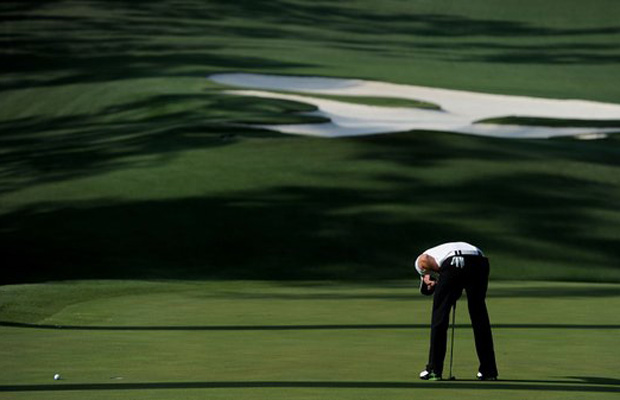
I had just hit a 6 iron pin high, about 15-feet right on No. 17. I was about to play my second-to-last hole in the 108-hole European Tour Qualifying Tournament, and was either right on the cut line or one shot from getting my tour card.
I remember walking up to the green thinking that I hadn’t made many putts that day, and I was due (jedi mind tricks on myself). I just kept telling myself to go through my routine and hit the best putt I could. That was my goal. I had practiced and prepared to the best of my ability and on that day, I holed the putt. The process helped me a great deal, and I went on to secure my tour card, tying for the last spot by making birdies on Nos. 17 and 18.
The process and practice routines I used to make clutch putts down the stretch have no magical formula; any a golfer of any level could hole the putts that I made. I’ll share what I’ve used to practice and prepare to make putts in my career, and if this helps you make some putts, well, who doesn’t like to make putts? Here’s my short list of priorities.
- Great putters don’t care if the ball goes in or not. I’m serious.
- Speed rules.
- Hit putts where you are aimed, which is more difficult than it sounds.
A little disclaimer before we get going; I’m going to share with you what I’ve used for years to work on my putting. I’m not getting paid to promote certain products; I just know what works for me and if that helps you, fantastic.
Here’s what I’m looking for during my practice sessions.
Alignment
The first image is a typical practice setup I would use. The thing on the ground is made by Dave Pelz, and it gives me feedback about my setup and my putting stroke. Once I’ve got a good read on the putt, I’ll use some tees to anchor the device to the green and get to work. In this image, I’m looking for a couple things.
- The coin on the ground, in coordination with this device, gives you great feedback about where you are aimed, letting you know exactly what it feels like to aim at that coin on the ground. You are teaching your mind, body, and eyes how to aim properly, which is very important in putting.
- By gently pushing the putter face up against the device, you know the putter is perfectly aligned and perpendicular to the starting line of the putt.
Eye Line
This image shows where your eyes are in relation to the starting line of the putt. A quick way to check your eye position without this aid is to get over a putt like you’re ready to hit it, but have an extra ball in your hand. Then hold the ball right in front of your eyes and drop it. Where the ball lands shows where your eyes are positioned in relation to the line of the putt. I’ve always putted with my eyes just inside of the line, which is represented by the image below.
This image below shows what it would look like if your eyes are too far over the line of the putt.
Most great putters I’ve known operate with their eyes slightly inside the line of the putt or directly over the line of the putt. Here’s an image of the overall setup. You’ll see the tiny gap under the ball and the putter flush against the device. That shows me that I’m perfectly lined up with my eyes just inside of the ball.
Hitting Putts
The goal with all of this is to start the ball on the line you have chosen for the speed you’ve chosen. In the images above, you’ll see two little steel marbles at the end of the device. If you’re not starting the ball online, the ball will hit one of these ball bearings and you’ll get immediate feedback. You’ll have to intuitively figure out how to consistently get the ball through the two bearings. Sometimes the path of the putter head may travel too far inside or outside, and sometimes the putter face will be closed or open at impact. This is where you learn how to hit putts on line consistently. Start with comfortably hitting putts through the widest setting then slowly move the bearings in as you become more consistent.
Taking It To The Course
When I get on the golf course, all I’m trying to do is imagine every putt I hit is coming out of this device. I simply have to aim myself correctly for the speed I’ve chosen. It doesn’t matter if the putt breaks one way or the other. All you can do is hit the best putt you are capable of hitting on the line you’ve chosen. If this sounds familiar, it’s because this was all I was thinking about when I holed that putt on the second-to-last hole of European Tour qualifying.
Here’s the same putt without the training device, a putt you’d likely see on the golf course. I try to find something 8-to-12 inches in front of my ball I can use as a reference for alignment.
See the leaf on the ground. Even though it’s close to my line, I’m not going to move it because if I hit it I’ll probably miss the putt. You can look for anything on the green to help you line up your putt: old ball marks, discolorations, etc.
Knowing I’m aiming just inside the leaf, I’ll get over the putt and imagine the device sitting on the ground with the white line aimed just inside of the leaf. Once I get over the ball, I know I’m aimed to the best of my ability and the only thing left to do is pull the trigger.
Remember, all you can do is hit the best putt you can. Once the ball leaves your putter face, there is nothing you can do. Sometimes bad putts go in, and sometimes great putts don’t. The most important thing you can do is create a measurable, consistent setup. Once you get on the golf course, you’re just picking a line, using your setup and letting go of the outcome.
- LIKE0
- LEGIT0
- WOW0
- LOL0
- IDHT0
- FLOP0
- OB0
- SHANK0
Instruction
The Wedge Guy: The easiest-to-learn golf basic

My golf learning began with this simple fact – if you don’t have a fundamentally sound hold on the golf club, it is practically impossible for your body to execute a fundamentally sound golf swing. I’m still a big believer that the golf swing is much easier to execute if you begin with the proper hold on the club.
As you might imagine, I come into contact with hundreds of golfers of all skill levels. And it is very rare to see a good player with a bad hold on the golf club. There are some exceptions, for sure, but they are very few and very far between, and they typically have beat so many balls with their poor grip that they’ve found a way to work around it.
The reality of biophysics is that the body moves only in certain ways – and the particulars of the way you hold the golf club can totally prevent a sound swing motion that allows the club to release properly through the impact zone. The wonderful thing is that anyone can learn how to put a fundamentally sound hold on the golf club, and you can practice it anywhere your hands are not otherwise engaged, like watching TV or just sitting and relaxing.
Whether you prefer an overlap, interlock or full-finger (not baseball!) grip on the club, the same fundamentals apply. Here are the major grip faults I see most often, in the order of the frequency:
Mis-aligned hands
By this I mean that the palms of the two hands are not parallel to each other. Too many golfers have a weak left hand and strong right, or vice versa. The easiest way to learn how to hold the club with your palms aligned properly is to grip a plain wooden ruler or yardstick. It forces the hands to align properly and shows you how that feels. If you grip and re-grip a yardstick several times, then grip a club, you’ll see that the learning curve is almost immediate.
The position of the grip in the upper/left hand
I also observe many golfers who have the butt of the grip too far into the heel pad of the upper hand (the left hand for right-handed players). It’s amazing how much easier it is to release the club through the ball if even 1/4-1/2″ of the butt is beyond the left heel pad. Try this yourself to see what I mean. Swing the club freely with just your left hand and notice the difference in its release from when you hold it at the end of the grip, versus gripping down even a half inch.
To help you really understand how this works, go to the range and hit shots with your five-iron gripped down a full inch to make the club the same length as your seven-iron. You will probably see an amazing shot shape difference, and likely not see as much distance loss as you would expect.
Too much lower (right) hand on the club
It seems like almost all golfers of 8-10 handicap or higher have the club too far into the palm of the lower hand, because that feels “good” if you are trying to control the path of the clubhead to the ball. But the golf swing is not an effort to hit at the ball – it is a swing of the club. The proper hold on the club has the grip underneath the pad at the base of the fingers. This will likely feel “weak” to you — like you cannot control the club like that. EXACTLY. You should not be trying to control the club with your lower/master hand.
Gripping too tightly
Nearly all golfers hold the club too tightly, which tenses up the forearms and prevents a proper release of the club through impact. In order for the club to move back and through properly, you must feel that the club is controlled by the last three fingers of the upper hand, and the middle two fingers of the lower hand. If you engage your thumbs and forefingers in “holding” the club, the result will almost always be a grip that is too tight. Try this for yourself. Hold the club in your upper hand only, and squeeze firmly with just the last three fingers, with the forefinger and thumb off the club entirely. You have good control, but your forearms are not tense. Then begin to squeeze down with your thumb and forefinger and observe the tensing of the entire forearm. This is the way we are made, so the key to preventing tenseness in the arms is to hold the club very lightly with the “pinchers” — the thumbs and forefingers.
So, those are what I believe are the four fundamentals of a good grip. Anyone can learn them in their home or office very quickly. There is no easier way to improve your ball striking consistency and add distance than giving more attention to the way you hold the golf club.
More from the Wedge Guy
- The Wedge Guy: Golf mastery begins with your wedge game
- The Wedge Guy: Why golf is 20 times harder than brain surgery
- The Wedge Guy: Musings on the golf ball rollback
- LIKE85
- LEGIT13
- WOW5
- LOL1
- IDHT0
- FLOP4
- OB1
- SHANK8
Instruction
Clement: Stop ripping off your swing with this drill!

Not the dreaded headcover under the armpit drill! As if your body is defective and can’t function by itself! Have you seen how incredible the human machine is with all the incredible feats of agility all kinds of athletes are accomplishing? You think your body is so defective (the good Lord is laughing his head off at you) that it needs a headcover tucked under the armpit so you can swing like T-Rex?
- LIKE0
- LEGIT2
- WOW2
- LOL0
- IDHT0
- FLOP0
- OB0
- SHANK2
Instruction
How a towel can fix your golf swing

This is a classic drill that has been used for decades. However, the world of marketed training aids has grown so much during that time that this simple practice has been virtually forgotten. Because why teach people how to play golf using everyday items when you can create and sell a product that reinforces the same thing? Nevertheless, I am here to give you helpful advice without running to the nearest Edwin Watts or adding something to your Amazon cart.
For the “scoring clubs,” having a solid connection between the arms and body during the swing, especially through impact, is paramount to creating long-lasting consistency. And keeping that connection throughout the swing helps rotate the shoulders more to generate more power to help you hit it farther. So, how does this drill work, and what will your game benefit from it? Well, let’s get into it.
Setup
You can use this for basic chip shots up to complete swings. I use this with every club in my bag, up to a 9 or 8-iron. It’s natural to create incrementally more separation between the arms and body as you progress up the set. So doing this with a high iron or a wood is not recommended.
While you set up to hit a ball, simply tuck the towel underneath both armpits. The length of the towel will determine how tight it will be across your chest but don’t make it so loose that it gets in the way of your vision. After both sides are tucked, make some focused swings, keeping both arms firmly connected to the body during the backswing and follow through. (Note: It’s normal to lose connection on your lead arm during your finishing pose.) When you’re ready, put a ball in the way of those swings and get to work.

Get a Better Shoulder Turn
Many of us struggle to have proper shoulder rotation in our golf swing, especially during long layoffs. Making a swing that is all arms and no shoulders is a surefire way to have less control with wedges and less distance with full swings. Notice how I can get in a similar-looking position in both 60° wedge photos. However, one is weak and uncontrollable, while the other is strong and connected. One allows me to use my larger muscles to create my swing, and one doesn’t. The follow-through is another critical point where having a good connection, as well as solid shoulder rotation, is a must. This drill is great for those who tend to have a “chicken wing” form in their lead arm, which happens when it becomes separated from the body through impact.
In full swings, getting your shoulders to rotate in your golf swing is a great way to reinforce proper weight distribution. If your swing is all arms, it’s much harder to get your weight to naturally shift to the inside part of your trail foot in the backswing. Sure, you could make the mistake of “sliding” to get weight on your back foot, but that doesn’t fix the issue. You must turn into your trial leg to generate power. Additionally, look at the difference in separation between my hands and my head in the 8-iron examples. The green picture has more separation and has my hands lower. This will help me lessen my angle of attack and make it easier to hit the inside part of the golf ball, rather than the over-the-top move that the other picture produces.


Stay Better Connected in the Backswing
When you don’t keep everything in your upper body working as one, getting to a good spot at the top of your swing is very hard to do. It would take impeccable timing along with great hand-eye coordination to hit quality shots with any sort of regularity if the arms are working separately from the body.
Notice in the red pictures of both my 60-degree wedge and 8-iron how high my hands are and the fact you can clearly see my shoulder through the gap in my arms. That has happened because the right arm, just above my elbow, has become totally disconnected from my body. That separation causes me to lift my hands as well as lose some of the extension in my left arm. This has been corrected in the green pictures by using this drill to reinforce that connection. It will also make you focus on keeping the lead arm close to your body as well. Because the moment either one loses that relationship, the towel falls.


Conclusion
I have been diligent this year in finding a few drills that target some of the issues that plague my golf game; either by simply forgetting fundamental things or by coming to terms with the faults that have bitten me my whole career. I have found that having a few drills to fall back on to reinforce certain feelings helps me find my game a little easier, and the “towel drill” is most definitely one of them.
- LIKE12
- LEGIT2
- WOW2
- LOL0
- IDHT0
- FLOP2
- OB0
- SHANK8
-

 19th Hole6 days ago
19th Hole6 days agoDave Portnoy places monstrous outright bet for the 2024 Masters
-

 19th Hole2 weeks ago
19th Hole2 weeks agoThings got heated at the Houston Open between Tony Finau and Alejandro Tosti. Here’s why
-

 19th Hole7 days ago
19th Hole7 days agoTiger Woods arrives at 2024 Masters equipped with a putter that may surprise you
-

 19th Hole2 weeks ago
19th Hole2 weeks agoReport: Tiger Woods has ‘eliminated sex’ in preparation for the 2024 Masters
-

 19th Hole1 day ago
19th Hole1 day agoTwo star names reportedly blanked Jon Rahm all week at the Masters
-

 19th Hole2 weeks ago
19th Hole2 weeks agoAddiction, spinal fusion, and scam artists – Everything Anthony Kim revealed in candid interview with David Feherty
-

 19th Hole2 weeks ago
19th Hole2 weeks agoAnthony Kim says doctors told him that he ‘may not have much time left’ ahead of LIV return
-
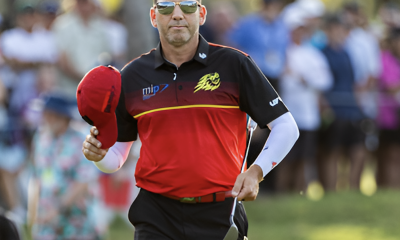
 19th Hole1 week ago
19th Hole1 week agoBrooks Koepka and Sergio Garcia make significant equipment changes as 2024 Masters looms



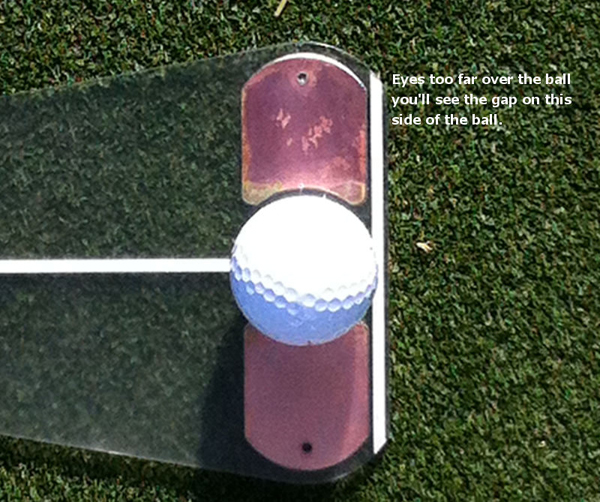
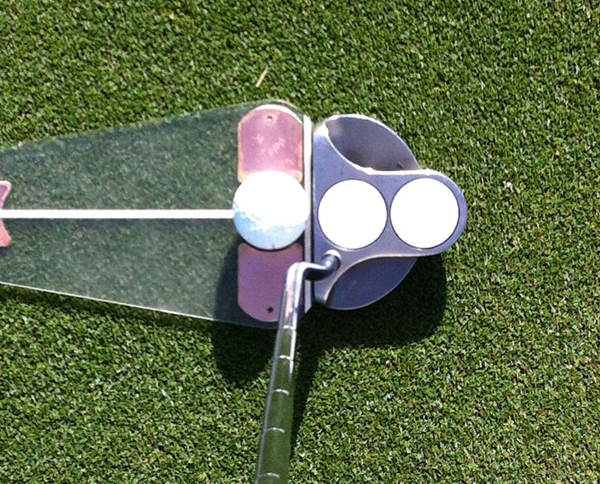
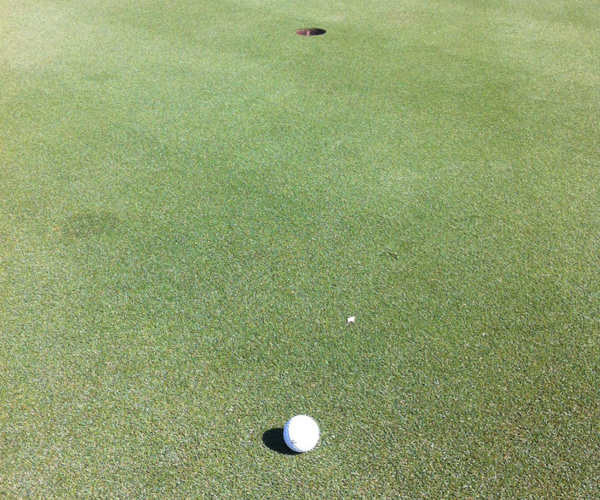

























KA
Jun 7, 2014 at 12:21 am
I got one of these devices about two months ago and it’s drastically changed my putting for the better. When you roll those putts through the marbles on the tour setting you gain so much confidence. It was also an eye opener on playing enough break. Worth every penny of that $50!
Rob Rashell
Jun 7, 2014 at 10:00 am
KA,
Agree, very simple and very effective, an eye opener for people who have never used it. Takes a bit to get used to rolling the ball through the close setting and ramps up the quality of your practice.
Rob
Jadon
Jun 4, 2014 at 2:46 pm
Where can you get one of these used? Pelz website has them for $50. That’s too much. I can rig something up similar just not as fancy for less than $50.
Rob Rashell
Jun 4, 2014 at 3:57 pm
J,
Pelz website only place I’ve found that has them. Let me know if you find another place that sells them.
Rob
Rob Rashell
Jun 4, 2014 at 10:17 am
Jeff,
Thanks! You more of a feel player?
Rob
jmichael204
Jun 4, 2014 at 10:05 am
Good article because I feel we get too wrapped up in telling people how to gain an extra 15 yards on our drives. Becoming a better golfer will always come from being better around the greens and putting. Putting is also something you can work on at home if you can’t make it out to the course regularly.
Rob Rashell
Jun 4, 2014 at 10:13 am
204,
You bet, I used to spend hours in front of the tv rolling putts on the carpet. Thanks for the thoughts.
Rob
Todd Turner
Jun 3, 2014 at 9:08 pm
Great device.. It works and is easily stowed in bag.
Rob Rashell
Jun 4, 2014 at 10:16 am
TT,
Have you spent time hitting putts with Pelz’s device? Has it helped to improve the quality of putts you hit?
Rob
Jeff
Jun 3, 2014 at 7:48 pm
Solid article. Not too techy.